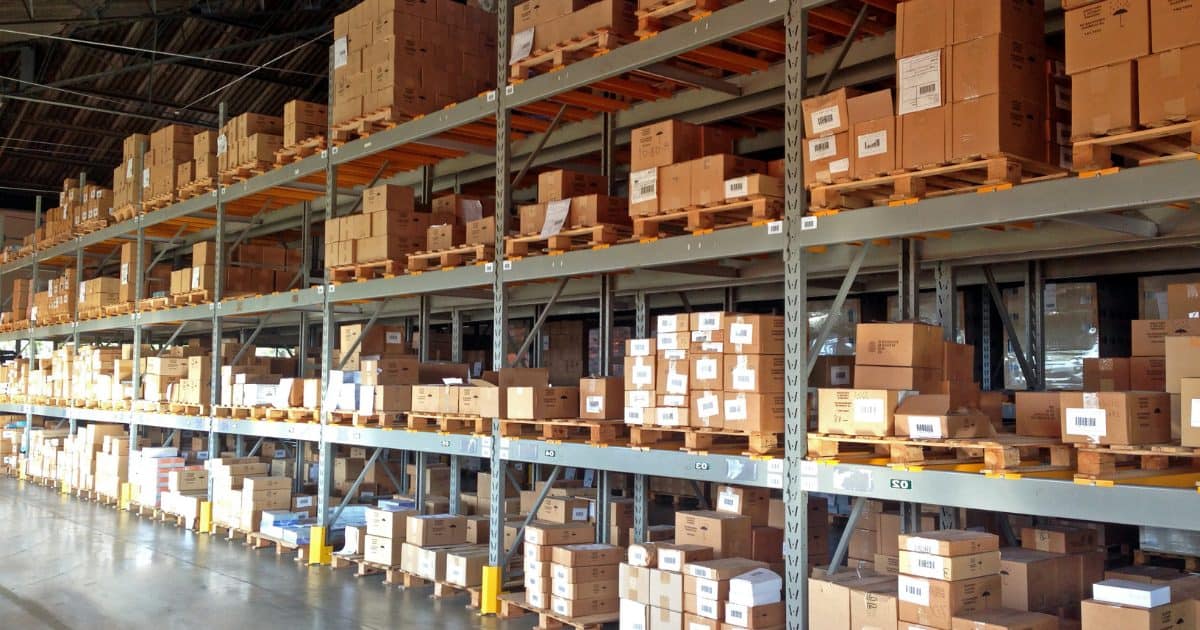
Material Handling Equipment (MHE) comprises a vast collection of tools, appliances, vehicles, storage units, and other accessories used in the different stages of the manufacturing, distribution, and disposal of goods and products.
These stages include transporting, controlling, enumerating, storing, and protecting goods in the supply chain. As there are many different functions involved, the Material Handling Equipment can be classified into four major categories: Storage Equipment, Engineered Systems, Industrial Trucks, and Bulk Material Handling Equipment.
Storage Equipment
Storage Equipment is used to hold and keep goods for longer periods until they are needed to be transported from the manufacturer or wholesaler to their next destination. Storage equipment is responsible for space utilization in a warehouse. They can affect the efficiency of production, depending on their organization. The following are examples of storage equipment:
1. Racks – Some examples are pallet racks, drive-through racks, and sliding racks
2. Shelves
3. Stacking Frames – These refer to stackable units that allow multi-level storage, which prevents goods’ crushing.
4. Drawers
5. Mezzanines – Mezzanines are assemblable structures that serve as an elevated floor between the production floor and the ceiling that provides additional storage spaces.
Engineered Systems
The Engineered Systems are a range of complex automated units that allow efficient storage and movement of goods across the production floor. They are usually involved in handling heavier materials to increase efficiency and reduce human error. These systems are typically designed for a specific function and location, customized according to the company’s needs. Examples of Engineered Systems are:
1. Automated Storage/Retrieval Systems (AS/RS) – These are large automatic structures comprised of racks, shelves, and aisles, with a mechanized retrieving instrument.
2. Conveyor Systems – These are continuously moving conveyors that transport large amounts of materials quickly from one point to another. They are efficient in carrying heavy loads.
3. Automatic Guided Vehicles – An example of AGV are robotic vehicles that can navigate through the warehouse on their own by following specific markers and guides.
Industrial Trucks
These are equipment used in moving large materials or containers around the manufacturing floor. They can also be used in loading goods onto delivery trucks. Industrial trucks are not necessarily vehicles that can be driven; they come in different shapes and sizes. These trucks offer more flexibility than conveyor belts that follow only a specific path. Industrial trucks are not restricted and can go almost anywhere around the warehouse. They include the following:
1. Hand Trucks – They are commonly known as dolly or box carts. They have a top handle. At the base are wheels on one side and a ledge for loading materials on another.
2. Pallet Jacks – Pallet jacks are the primary form of forklift used to lift and transport pallets.
3. Walkie-stackers – These are powered industrial forklifts that can load heavier materials and lift them to higher areas
4. Platform Trucks – similar to hand trucks, but they have four wheels and an extended deck.
5. Sideloader – Sideloader is a special type of forklift that loads on its side. Sideloaders usually have bigger capacities for transporting materials.
Bulk Material Handling Equipment
As the name suggests, this type of equipment is used to store, control, and transport materials in bulk. Generally, this equipment is used when handling items in their loose form, moving them from one part of the production area to the next. Some of the equipment is also classified in other categories of MHE. Examples of these are as follows:
1. Conveyor Belts – Conveyor belts are used for transporting materials horizontally around the production floor.
2. Stackers
3. Silos – Silos are large structures or towers that store different materials such as food, grain, coal, and woodchips.
4. Hoppers – Hoppers refer to containers for large quantities of materials that discharge from a conical opening at the bottom.
5. Bucket Elevators – Also called a grain leg, bucket elevators are similar to a conveyor belt but transport tremendous amounts of materials vertically. They can haul a variety of bulk materials, from light to heavy, and from fine to large.
6. Reclaimers – Reclaimers are enormous machines that retrieve bulk materials from a stockpile.
Contact us at info@wiparts.net or (916)570-1524 to inquire on our wide variety of material handling parts and tires of all sizes. With Wholesale Industrial Parts, make your parts buying experience easy!
